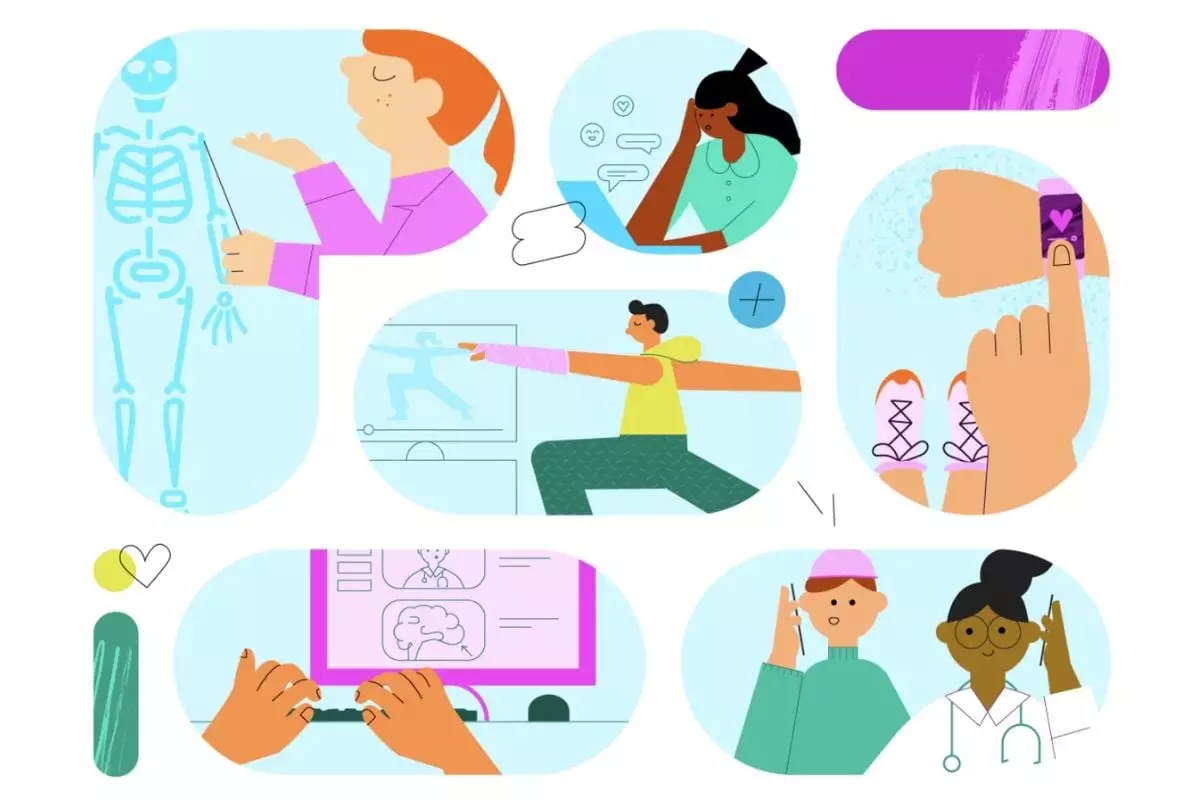YouTube has taken a significant step in enhancing its health-related initiatives, aiming to create a platform enriched with credible information regarding medical and wellness topics. In an age where misinformation can spread rapidly, it becomes crucial to ensure that users have access to verified and accurate health content. The recent announcement by YouTube about expanding its features previously reserved for accredited health organizations is a testament to the platform’s commitment to this cause.
Expanding Access to Health Content
The introduction of ‘health content shelves’ and ‘health source information panels’ marks a pivotal shift in how health-related information is disseminated on YouTube. These tools are designed to improve the user experience by presenting verified information more prominently in search results. Organizing health content in a carousel format allows individuals to navigate through information easily, steering clear of misleading or sensationalized titles that often dominate internet searches. This shift in focus towards verified creators, such as registered doctors and nurses, not only expands the pool of credible information but also democratizes content creation in the health sphere.
Previously, these features were exclusive to accredited health organizations, including prestigious institutions like AIIMS and Apollo Hospitals in India. Such an approach limited the diversity of voices in health discussions, restricting it mainly to established organizations. By broadening access to a wider range of healthcare professionals—such as mental health experts and licensed practitioners—YouTube acknowledges that expertise exists beyond traditional healthcare confines, allowing smaller voices and innovative thoughts to surface on its platform.
The rigorous verification process that YouTube intends to implement during the application phase is crucial to mitigating the risk of misinformation. Content creators who wish to participate in this initiative must undergo a detailed review, adhering to the best practices established by reputable organizations like the Council of Medical Specialty Societies and the World Health Organization. This not only elevates the quality of information being shared but also reinforces the credibility of the creators involved.
Moreover, the stipulation that applicants must have a channel in good standing further emphasizes YouTube’s commitment to maintaining quality. This means that healthcare professionals cannot simply create an account and begin disseminating information; they must maintain a track record of trustworthy content. By outsourcing some of the responsibility for content verification to these authoritative organizations, YouTube takes a step towards sustainable health communication.
The implications of this expanded initiative are far-reaching. As the platform integrates a wider array of healthcare narratives, users will undoubtedly benefit from more personalized healthcare information that caters to their interests and concerns. The avenue for individuals to connect and engage with healthcare providers directly through videos could foster a more informed community, bridging gaps between healthcare professionals and the public.
This initiative also serves to alleviate some challenges faced by individuals seeking reliable health information amidst the noise of unverified sources. With the trend towards preventative care and health literacy, providing users with access to professional medical advice can streamline their ability to make informed health choices. YouTube’s expansion of these features suggests a proactive approach to public health, encouraging professionals to use digital platforms for outreach and education.
The Future of Health Content on YouTube
The evolution of YouTube’s approach to healthcare content creators is just the beginning. With plans to extend these product features across additional medical specialties in the future, the potential for a holistic and varied presentation of health-related information appears promising. As digital platforms continue to shape how we consume information, fostering a culture of verified content becomes increasingly vital.
In a world where the line between fact and fiction often blurs, YouTube’s initiative represents a progressive step in prioritizing public health and wellness education. By empowering verified healthcare professionals to share their knowledge, YouTube not only enhances its platform but also plays a significant role in promoting health literacy among its vast user base. As such, this initiative is indicative of a broader trend toward collective responsibility in health information sharing, ensuring users are well-equipped to navigate the complexities of medical knowledge in the digital age.


Leave a Reply